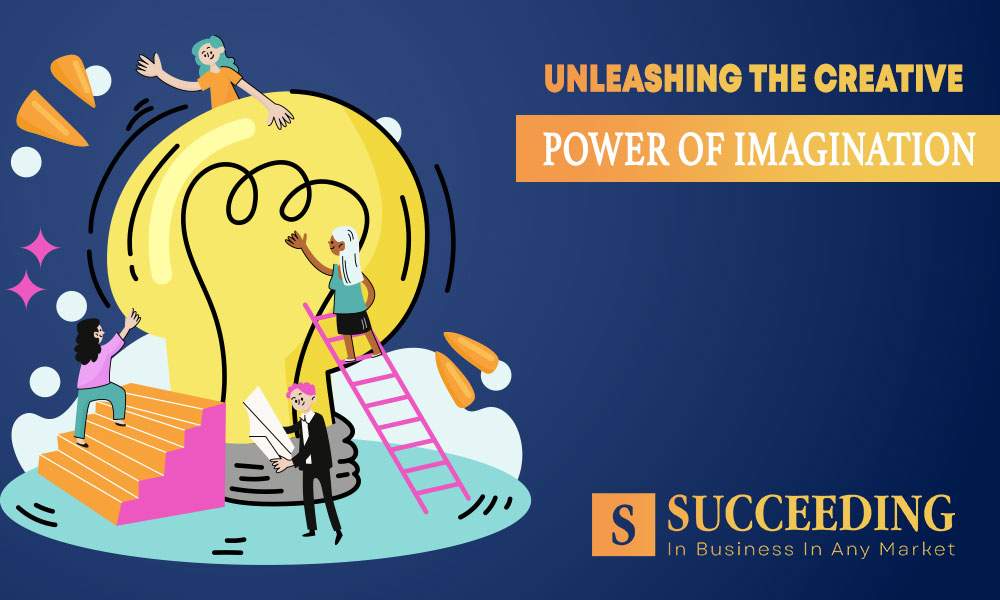In the vast landscape of human cognition, imagination stands as a beacon, guiding the creative spirit toward unexplored realms. This article delves into the essence of imagination, exploring its transformative impact on creativity, problem-solving, and innovation. With a focus on the correct use of imagination, we navigate the delicate balance between boundless creativity and purposeful application. Join us on a journey to unleash the creative power of imagination and discover how it can shape our perceptions and possibilities.
The Essence of Imagination
Imagination, the ethereal force that propels human creativity, is the ability to form mental images or concepts not present to the senses. At its core, imagination transcends the boundaries of reality, enabling individuals to envision possibilities, scenarios, and ideas beyond the constraints of the tangible world. It is the essence that fuels artistic expression, scientific discoveries, and the innovation that propels societies forward.
The Correct Use of Imagination
In the pursuit of creative endeavors, understanding the concept of the “correct use of imagination” is paramount. This entails striking a delicate balance between unrestrained creativity and purposeful application. Imagination, when channeled with intention and focus, becomes a potent tool for positive outcomes. Throughout history, visionaries and creative minds have demonstrated the profound impact of the correct use of imagination in shaping the world.
Nurturing Imagination in Everyday Life
Mindfulness Practices
Mindfulness, the practice of being fully present in the moment, serves as a gateway to enhanced imagination. By clearing mental clutter and fostering focused awareness, mindfulness creates space for imaginative thinking. Simple exercises, such as mindful breathing or sensory awareness, can be seamlessly incorporated into daily routines.
Reading and Exposure
The gateway to a vibrant imagination often lies in exposure to diverse ideas, cultures, and perspectives. Reading, a window to different worlds, stimulates the imaginative faculties. Encouraging exploration of various genres, art forms, and cultural experiences broadens the imaginative horizon and nurtures creative thinking.
Harnessing Imagination in Problem-Solving
Imagination is not confined to the realm of artistic expression; it is a practical tool for problem-solving. Through imaginative thinking, individuals can approach challenges with fresh perspectives, identifying innovative solutions that may elude conventional approaches. This section explores case studies and examples where imaginative problem-solving has led to transformative outcomes.
Imaginative Techniques for Idea Generation
Brainstorming
A classic and widely recognized technique, brainstorming encourages free-flowing imaginative ideas. By suspending judgment during the ideation phase, individuals can unleash a torrent of creative concepts. Practical tips for effective brainstorming sessions are provided, emphasizing the importance of creating a non-judgmental space for idea generation.
Mind Mapping
Mind mapping, a visual representation of interconnected ideas, serves as a powerful tool for organizing and expanding imaginative thoughts. This technique is explored, along with guidance on creating mind maps for project planning, goal setting, and creative endeavors.
Overcoming Imaginative Blocks
The creative journey is not without its challenges, and imaginative blocks are a natural part of the process. This section acknowledges common obstacles such as fear of failure or self-doubt and provides strategies for overcoming these mental barriers. The iterative nature of the creative process is emphasized, highlighting the importance of persistence in nurturing imagination.

Conclusion:
In conclusion, the article has unraveled the multifaceted nature of imagination, from its essence to the correct use in various aspects of life. It has explored how imagination, when harnessed intentionally, can become a driving force for innovation, creativity, and problem-solving. As we navigate the intricate landscape of the mind, let us embrace the creative power of imagination as a tool for personal and professional growth.
FAQs
Q1: Is there a difference between imagination and creativity?
A1: Yes, while imagination involves the ability to form mental images or concepts, creativity is the process of bringing these imaginative ideas into reality. Imagination is the seed, and creativity is the act of cultivation and expression.
Q2: Can anyone develop their imagination, or is it an inherent trait?
A2: Imagination can be cultivated and developed through intentional practices and exposure to diverse stimuli. While some individuals may have a predisposition for imaginative thinking, everyone has the capacity to enhance their imaginative abilities.
Q3: How can the correct use of imagination benefit professional life?
A3: The correct use of imagination in professional life can lead to innovative problem-solving, enhanced decision-making, and creative contributions. It allows individuals to envision new possibilities, think outside the box, and navigate challenges with a fresh perspective.
Q4: Are there specific exercises for enhancing imagination in the workplace?
A4: Yes, exercises such as collaborative brainstorming sessions, creative workshops, and team-building activities that encourage imaginative thinking can be beneficial in the workplace. These activities foster a creative culture and stimulate innovative ideas.
Q5: How can parents encourage the development of imagination in children?
A5: Parents can encourage imagination in children by providing open-ended toys, engaging in imaginative play, reading diverse stories, and exposing them to various creative activities. Creating a supportive environment that values and nurtures imaginative thinking is key.



